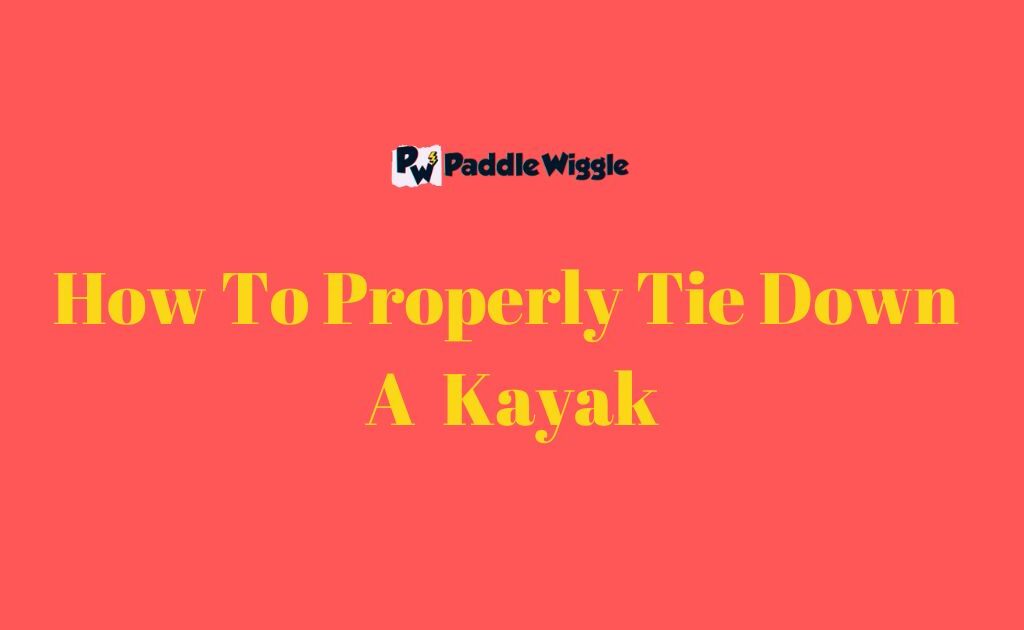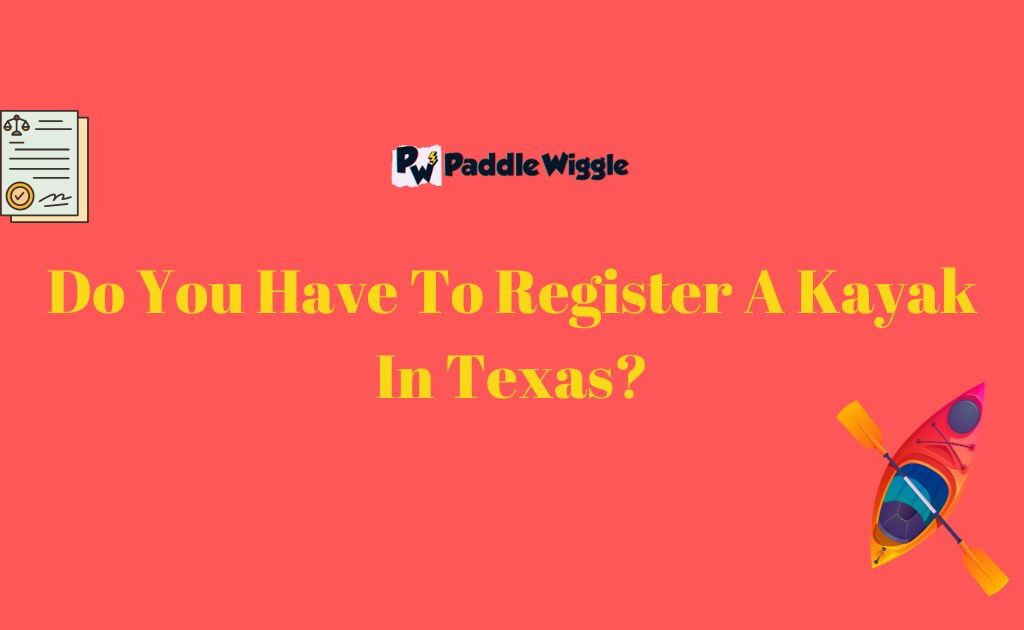Kayaking is a fun activity on the water that lets you enjoy nature and peaceful waters. However, safety should be the first priority when doing any outdoor things. And following the rules and regulations are essential for a safe and fun time.
Life jackets are like armor, but is it Illegal to Kayak Without a Life Jacket? The short answer is Yes, it is illegal to go kayaking without a Coast Guard approved life jacket. In most states, all kayaks must be equipped with one while on the water.
Now, do you always have to wear a life vest while kayaking? Again, the answer is straightforward: yes!
No matter, if you’re kayaking on calm waters or exploring adventurous rapids, wearing a life jacket, is crucial for your safety. It helps keep you safe from dangers and prevents accidents.
This article talks about life jacket laws for kayaking. We’ll also discuss kayak life jacket laws in different states to ensure you have a hassle-free expedition.
Let’s begin.
Contents
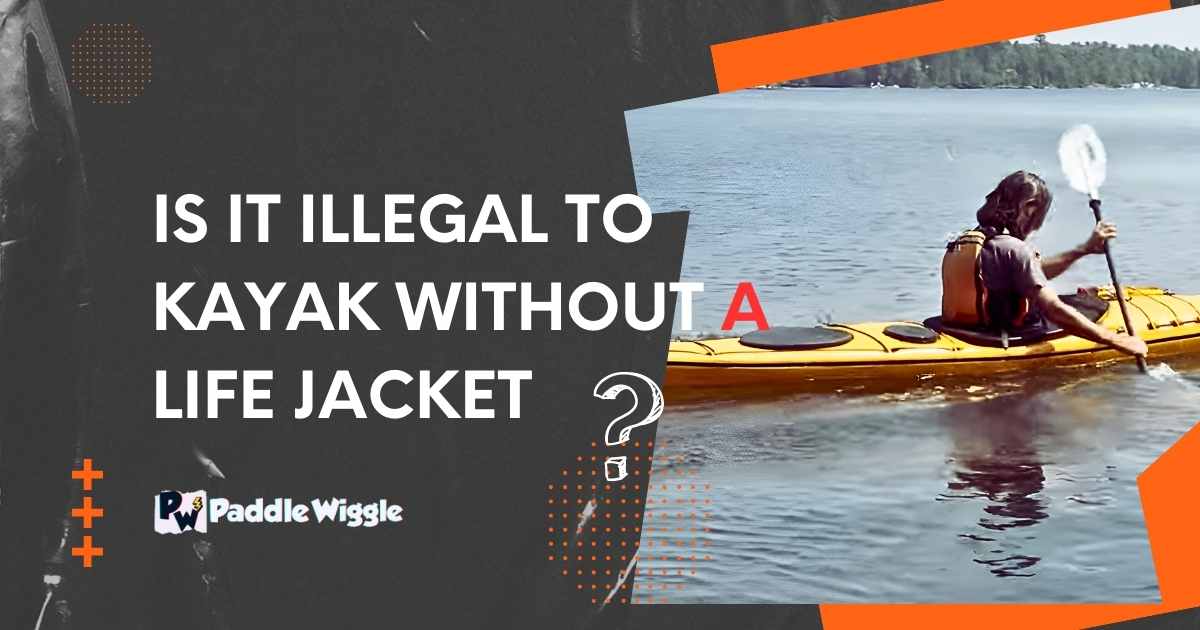

U.S. Coast Guard Regulations On Life Vest
The U.S. Coast Guard (USCG) strictly enforces regulations concerning life vests, also known as PFDs, for recreational vessels, including kayaks and canoes. These regulations are designed to ensure the safety of everyone on the water.
To meet the U.S. Coast Guard requirements, every recreational vessel must have a USCG-approved life jacket for each person on board. The life jackets must be “Coast Guard approved,” meaning they meet the safety standards set by the USCG.
Furthermore, if a kayak is underway and has children under 13 years old on board, those children must always wear a life jacket. This rule applies regardless of whether the vessel is a motorized boat or a kayak.
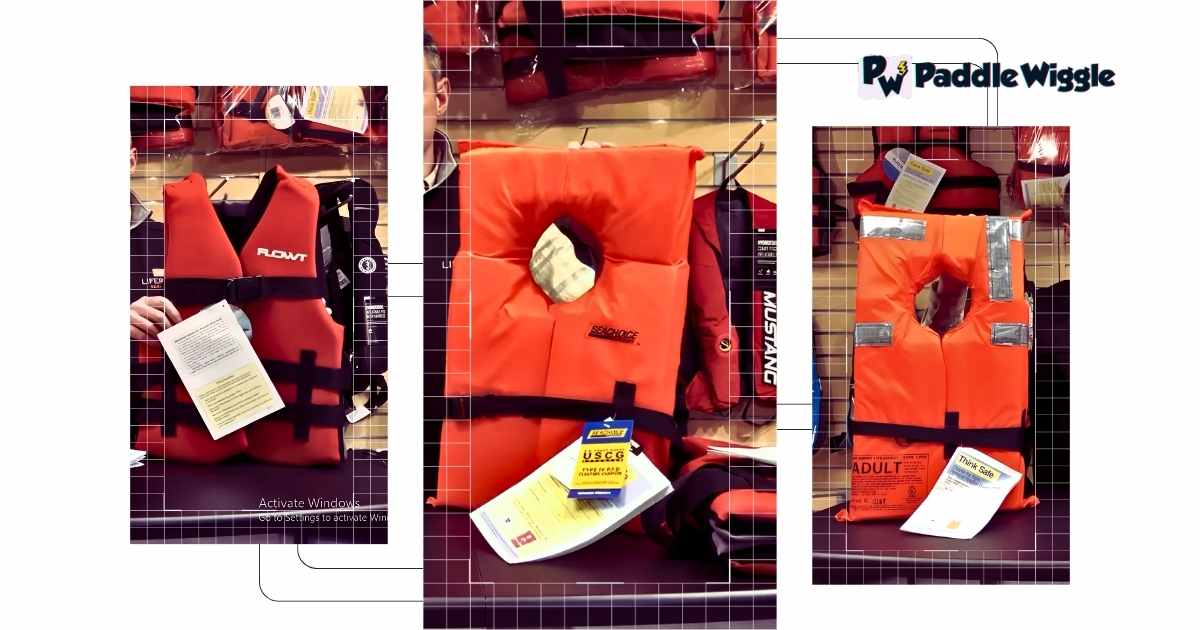

The USCG mandates that all vessels, including kayaks, must have at least one Type I, II, or III USCD approved PFD. These types of life jackets provide different levels of buoyancy and are suitable for various water activities.
For kayaking or canoeing, the USCG recommends wearing a life jacket that is intended for that activity. These specialized life jackets are designed to provide comfort and freedom of movement while ensuring proper safety in the water.
Federal Laws Regarding Life Jacket
Federal laws regarding kayak life jackets are established to promote water safety and protect individuals engaged in kayaking and other water activities. These laws are the bedrock of water safety.
These rules are part of the Boating Safety regulations under Title 33, Chapter I, Subchapter S – Boating Safety. They are there to protect everyone who enjoys water activities, like kayaking, and make sure they stay safe.
Here are a few Federal Regulations related to kayak life jackets:
CFR § 117.71: This regulation requires that each kayak must have at least one Type I, II, or III personal flotation device (PFD) that the U.S. Coast Guard approves. These types of life jackets provide different levels of buoyancy and are suitable for various water activities.
CFR § 175.15: This regulation specifies that children under 13 years old must wear a U.S. Coast Guard-approved life jacket while on board a moving vessel, including kayaks. And Boats above 16 ft need a throwable life vest. This rule ensures the safety of young passengers on the water.
CFR 175.25: This regulation pertains to using and maintaining life jackets and requires kayakers to ensure that their life jackets are in good condition, readily accessible, and properly sized for each person on the kayak.
CFR 180.71: As per this regulation, all recreational vessels, including kayaks, must carry a U.S. Coast Guard-approved life jacket for each person on board. The life jackets must be in serviceable condition and appropriately sized for the individuals.
CFR § 180.72: This regulation addresses the compliance and enforcement of the life jacket requirements. It emphasizes the importance of wearing a life jacket that meets the U.S. Coast Guard standards and properly fits each individual.
Life Jacket Laws In Different States Across The U.S.
Life jacket laws in the U.S. have their quirks, and it’s in the diversity from state to state. Each state, shaped by its waterways, culture, and fun habits, crafted its own rules to fit just right.
Some states have strict laws, making life jackets a must for all boaters, regardless of age. Others take a different route, focusing on specific age groups or types of boats.
All these twists reveal the dance between water safety, local needs, and how states look out for their folks on the water.
In most cases, life jacket laws can be grouped into five categories:
Regulations Based On Age
Some states have specific age rules for wearing life jackets while kayaking. For example, kids under 13 in California must always wear USCG-approved life jackets while kayaking. This extra protection is because young children may be more at risk on the water.
Type Of Watercraft
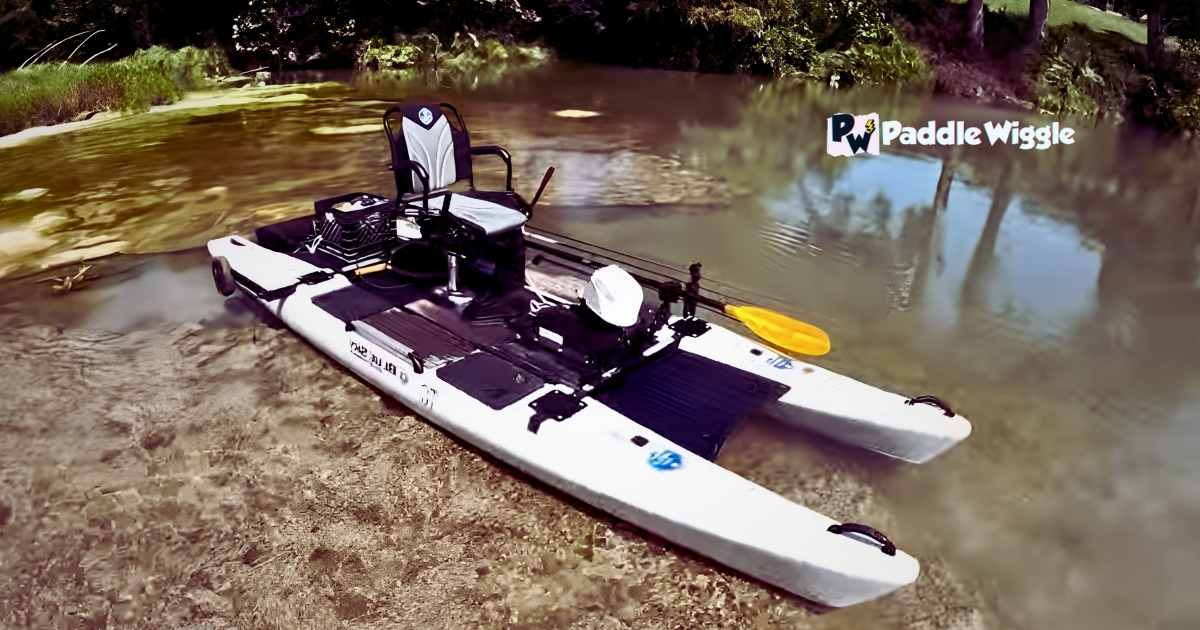

Life jacket laws may differ based on the type and size of the boat. Personal watercraft like jet skis often have stricter requirements for both riders and passengers due to their high speed.
Specific Water Bodies
Certain states have rules tailored to particular water bodies. For example, certain rivers, lakes, or coastal areas may require mandatory life jacket usage for kayaking to address specific safety concerns.
Type Of Life Vest To Use
States may specify the type of life vest needed for kayaking. The U.S. Coast Guard classifies life jackets into different types based on buoyancy and use. States may require specific types of life vests suitable for kayaking or other water activities.
Additional Requirements
Some states have extra rules, like requiring throwable life-saving devices on certain vessels or during specific activities like waterskiing. These additional requirements enhance safety on the water.
Let’s take a closer look at the kayak life vest laws in different states across the U.S.
| State | Life Jacket Requirement | Fine for Non-Compliance |
|---|---|---|
| Alabama | Children under 8 must wear life jackets on water vessels. | $25 to $100 fine for violating life jacket laws. |
| Alaska | Children under 13 must wear life jackets on boats under 21 feet. | $50 fine for violating life jacket laws. |
| Arizona | Children under 12 must wear life jackets on vessels underway. | $50 fine for non-compliance. |
| California | Children under 13 must wear life jackets on vessels underway. | $100 fine for violating life jacket laws. |
| Colorado | Children under 13 must wear life jackets on boats under 26 feet. | $50 fine for not wearing life jackets. |
| Florida | Children under 6 must wear life jackets on boats under 26 feet. | $50 fine for not following life jacket laws. |
| Kentucky | All passengers must wear life jackets on water vessels. | $25 fine for not wearing life jackets. |
| Maryland | All vessels must carry life jackets for each person onboard. | $500 fine for non-compliance. |
| Michigan | Children under 6 must wear life jackets on boats under 26 feet. | $100 fine for violating life jacket laws. |
| Minnesota | Children under 10 must wear life jackets on boats under 20 feet. | $25 fine for not wearing life jackets. |
| Missouri | Children under 7 must wear life jackets on vessels underway. | $50 fine for not following life jacket laws. |
| New Jersey | All boats must carry life jackets for each person onboard. | $25 fine for not wearing life jackets. |
| New York | Children under 12 must wear life jackets on boats under 65 feet. | $100 fine for non-compliance. |
| Ohio | Children under 10 must wear life jackets on vessels underway. | $50 fine for violating life jacket laws. |
| Oklahoma | Children under 13 must wear life jackets on boats under 26 feet. | $50 fine for not wearing life jackets. |
| Pennsylvania | All boats must carry life jackets for each person onboard. | $100 fine for not following life jacket laws. |
| Texas | Children under 13 must wear life jackets on vessels underway. | $25 fine for violating life jacket laws. |
| Washington | Children under 13 must wear life jackets on boats under 19 feet. | $87 fine for non-compliance. |
Life Jacket Law In California
California has rules to keep people safe while kayaking and being on the water. If you’re under 13 years old and on a moving boat, you must wear a life jacket, even if it’s a kayak. This is because young people need extra protection to stay safe in case something happens on the water.
To meet the safety standards in California, it’s a good idea to use life jackets approved by the U.S. Coast Guard (USCG). These special life jackets are made to keep you afloat and safe while kayaking or doing other water activities.
If you don’t follow the life jacket rule in California, you could get fined up to $150. The fine might be different depending on the situation, but the goal is to remind everyone how important it is to take water safety seriously and wear the right life jacket whenever you’re out having fun on the water.
Life Jacket Law In Missouri
In Missouri, there are rules to keep people safe while kayaking and enjoying water activities. If you are riding a personal watercraft (PWC) or are under 7 years old on any boat, you must wear a life jacket while the boat moves. The only exception is if you are inside a fully enclosed area of the boat, like a cabin on a houseboat.
And if you don’t wear a life jacket when you should, there can be serious consequences. You could face a maximum punishment of one year in jail and/or a fine of up to $1,000. The severity of the penalty shows how crucial it is to obey these regulations and keep everyone safe while having fun on the water.
Life Jacket Law In Florida
According to Florida’s life jacket law, children under the age of 6 must wear a U.S. Coast Guard (USCG) approved life jacket while onboard any vessel under 26 feet in length. This includes kayaks and other watercraft. The law emphasizes the importance of providing extra safety for young children who may be more vulnerable to accidents on the water.
Furthermore, Florida law requires all vessels, including kayaks, to have at least one wearable USCG-approved life jacket for each person onboard. This means that regardless of age, each individual must have access to a life jacket while on the water.
Failure to comply with the life jacket law in Florida can result in fines for the boat operator or owner. The fine for not following the life jacket requirement is $50.
Life Jacket Law In Arkansas
In Arkansas, all boats, including kayaks, must have U.S. Coast Guard approved life jackets for each person onboard. This means that everyone on a kayak or any other boat should have a proper life jacket that fits well and keeps them safe while on the water.
For kids under 12 years old, wearing a USCG-approved life jacket is a must whenever the boat is moving. This rule is to make sure young ones stay safe since they might be more at risk on the water.
Kayakers and boaters in Arkansas need to follow this law and wear the right life jackets. These special life jackets are designed to keep you afloat and protect you during water adventures.
Not following the life jacket law can result in fines for the boat operator or owner. The fine can be between $100 and $250. This shows how serious Arkansas is about water safety and encourages everyone to take it seriously while having fun on the water.
Life Jacket Law In Georgia
According to Georgia’s life jacket law, all children under the age of 10 years old must wear a U.S. Coast Guard (USCG) approved life jacket while on an open vessel. This means that if you are kayaking or on any other open boat and you’re under 10 years old, you must wear a life jacket to stay safe on the water.
Additionally, the law requires all individuals to wear a life jacket while in a designated hazardous area. This means that regardless of age if you are in an area marked as hazardous, you must wear a USCG approved life jacket for your safety.
You could face penalties if you don’t follow the life jacket requirements.
Life Jacket Law In New York
In New York, if you’re under 12 years old and on a boat that’s less than 65 feet long, you must wear a U.S. Coast Guard approved life jacket. It’s essential to keep you safe while you’re on the water.
Also, if you’re on a boat that’s less than 21 feet long between November 1st and May 1st, you must wear a USCG-approved life jacket. This is because the water conditions might be more challenging during the colder months, and the life jacket helps protect you.
Not wearing the required life jacket can lead to serious consequences. You may be guilty of a petty misdemeanor, and the judge could fine you between $50 and $500 or put you in jail for up to 30 days. The court may also add court costs, and the judge might choose to put you on probation.
Life Jacket Law In Iowa
In Iowa, if you’re being towed on waterskis, surfboards, or similar devices, or if you’re riding a jet ski, you must wear a U.S. Coast Guard approved life jacket. It’s essential for your safety while you’re on the water.
Follow this life jacket law to avoid legal trouble. The offense is considered a simple misdemeanor, and the fines for not wearing the required life jacket are $20.00, plus additional costs of $56.40, making a total of $76.40.
Life Jacket Law In Maine
In Maine, wearing a life jacket while kayaking or doing other water activities is really important. The state wants to make sure everyone stays safe while exploring its beautiful lakes, rivers, and coastal areas.
The law says that some specific groups of people must wear a U.S. Coast Guard approved life jacket. This includes kids who are 10 years old and under, people riding or driving a personal watercraft like a jet ski, and those being towed on waterskis. Also, if you’re canoeing or kayaking on the Saco River between January 1st and June 1st, between the Hiram Dam and the Atlantic Ocean, you need to wear a life jacket too.
Learn More
Can I Go Kayaking Without Wearing A Life Jacket?
No, going kayaking without wearing a life jacket is not recommended. In most places, including the United States, it is illegal to kayak without a U.S. Coast Guard (USCG) approved life jacket.
What Types Of Personal Flotation Devices (Pfds) Are Suitable For Kayaking?
Various types of personal flotation devices are suitable for kayaking, each designed for different water activities and conditions. The three main types of PFDs that are commonly used for kayaking are Type I, Type II, and Type III.
Type I PFDs: These are known as offshore life jackets and provide the most buoyancy. They are suitable for open, rough, or remote waters where rescue may take longer.
Type II PFDs: Also known as near-shore buoyancy vests, these PFDs are designed for calmer waters and provide less buoyancy compared to Type I. They are suitable for kayaking in sheltered areas where quick rescue is expected.
Type III PFDs: These are the most common PFDs used for kayaking. They are designed for activities like paddling and offer a good balance of comfort and buoyancy. Type III PFDs allow for ease of movement, making them ideal for kayakers.
When choosing a PFD for kayaking, make sure it is USCG approved and properly fits your body size. Always wear your PFD while kayaking to ensure your safety on the water.
Are There Specific Laws Regarding Kayak Life Vest Usage In Different States?
There are specific laws regarding kayak life vest usage in different states across the United States. Each state has its own regulations and requirements for wearing life jackets while kayaking and participating in other water activities.
The laws vary from state to state, and they include specific age requirements for wearing life jackets, certain exemptions for enclosed areas on boats, and regulations for using USCG approved life jackets.
To ensure compliance with the law, it is essential to be aware of the specific life jacket regulations in the state where you plan to go kayaking. So, check your local boating laws and familiarize yourself with the requirements set by the state authorities.
Final Words
In the end, it’s legal to kayak without a life jacket approved by the USCG. It’s a floating guardian. They deliver not only buoyancy but also a shield of defense!
Unraveling the significance of water safety laws, we recommend you wear a well-fitted one specifically made for the activity.
Though the specifics may vary, the underlying truth remains constant – So remember to wear your PFD while kayaking.

